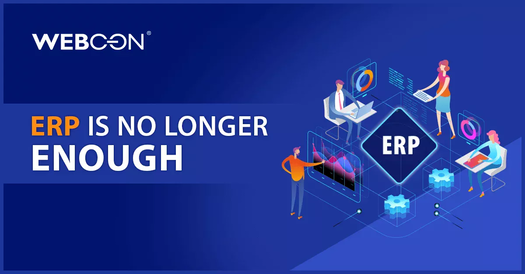In an era of omnipresent digitization, the natural path of progression for larger companies is to implement systems such as DMS (Document Management System) and BPMS (Business Process Management System), whose cornerstones are digitization, automation and workflow. But when doing so, it is important to consider how best to use the DMS tool to most effectively implement the company’s digital transformation strategy. It is also good to think about the right context for deploying BPM solutions.


The effectiveness of initiatives taken under the banner of digital (r)evolution depends on the implemented technology’s potential, combined with the pace at which an organization can update its business processes. In other words, if we’re not able to effectively implement new procedures or bring about a change in how our employees operate in order to fully capitalize on the potential of locally implemented technical novelties, we may miss out on harvesting the crop of digital transformation. That is why for many companies, the business process change that results from implementing new technologies automatically becomes a candidate area for BPM. On the other hand, many companies see the prospect of digitizing processes, that were previously handled on paper, as the easiest step towards digital transformation. The overarching assumption is rather straightforward: the digitization of a paper document, combined with a workflow task assignment mechanism, allows for better management of the process, while also ensuring that relevant procedures are followed at each step – it also cuts costs, increases transparency and generally makes the employees’ lives easier. Basically, DMS allows us to exit the Stone Age that paper documents represent.
In the traditional typology of IT systems, the main function of DMS is document digitization, taken to mean registering, scanning, classifying, storing and sharing their digital versions with those who need them, and who are authorized to access them. BPMS, in turn, is the layer responsible for assigning tasks, handling approval processes, and for routing data and information between individuals, departments and IT systems. In practice, these two layers tend to overlap and become interdependent.
Indeed, when discussing BPMS, we frequently refer to case files, which naturally incorporate documents processed by a DMS. They can either launch approval workflows (e.g. for a company’s incoming invoices), or result from collecting information and approvals completed in the process layer (e.g. agreements generated in the system based on information that sales employees gleaned from customer, analyses provided by risk assessment departments, etc.).
The case-file-oriented approach, where the major components of the process are document scans, conversation threads, email exchanges, etc., seems a natural progression of the evolution taking place in process management tools. The orchestration of tasks related to task and information workflow takes place in the context of a case file. That is the reason behind the growing popularity of solutions that not only communicate the need for approval, but also provide the user with a single access point to all pertinent documents, data collected from users taking part in the process via a form, as well as context-based data and reports gathered from outside sources (i.e. other systems or data made available via public services). All of this serves the pursuit of effectiveness – making decision-making efficient, without having to rely on third-party tools to obtain key information.
Digital transformation brings with it another important trend in DMS and BPMS development, one related to the pace at which changes to business processes are made. This is the up-front assumption that the implemented solutions will undergo frequent modifications – due to the need to keep them compliant with changing legal regulations, the desire for further optimization of processes, new technological advancements, etc. Most developers of workflow management software for tasks and documents have responded to this by radically simplifying the process of creating process applications. Eliminating script-based languages or the need to code has resulted in low-to-no-code platforms becoming much more user-friendly. This means less time is required to create the required application, which is now also much easier to understand and modify, should the need for changes arise.
With this in mind, at WEBCON BPS we have developed our original and globally unique InstantChange™ technology. It allows for simple, immediate and controlled changes to be introduced to the flow of processes, business rules or for modifications to be made in the layer of integration with third-party systems as part of our DMS – in real time, without placing the running applications at risk of instability. In practice, it is not only easier to change solutions running in production, but also the very process of building them is now more agile and reliant on an iterative approach. This is particularly important in the age of digital transformation, where low-code platforms are becoming key technologies for business, as they offer an effective and complementary suite of functionalities (that have been present on the IT market for some time) brought on by such solutions as DMS and BPMS. This combination works especially well, given that we often face the challenge of building an application in an environment where the business requirements are unclear and are subject to constant changes – when an application is being developed alongside a business process in a perpetual feedback loop.







